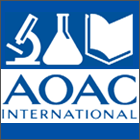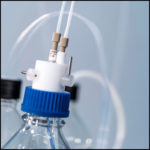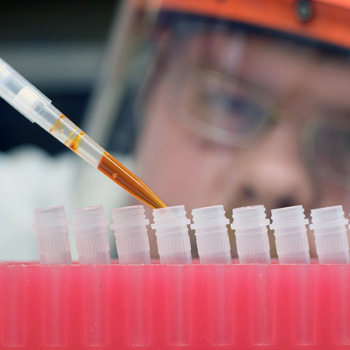 Held in August, the 2018 AOAC International Meeting in Toronto, Canada was an excellent opportunity for Pickering Laboratories to be closer to our customers in Canada and the northern United States. The annual AOAC meeting brings experts in food safety, food integrity and public health together to develop and validate analytical methods. This year, Canadian Governmental Laboratories were in significant attendance as well.
Held in August, the 2018 AOAC International Meeting in Toronto, Canada was an excellent opportunity for Pickering Laboratories to be closer to our customers in Canada and the northern United States. The annual AOAC meeting brings experts in food safety, food integrity and public health together to develop and validate analytical methods. This year, Canadian Governmental Laboratories were in significant attendance as well.
Mike Gottschalk and Maria Ofitserova met with existing customers and other attendees interested in our instrumentation and consumables. We exhibited the latest in post-column applications at our booth and sponsored a Vendor Session on our most recently developed method. We also answered questions our growing Pickering Test Solutions product line. The artificial body fluids we manufacture for research and consumer product testing generated a surprising amount of interest from attending laboratories needing standardized solutions for testing various products.
At our Vendor Session, Maria Ofitserova presented our newly developed and validated method: “Amino Acids Analysis in Dietary Ingredients and Supplements by High-Performance Liquid Chromatography and Post-Column Derivatization.” This method follows the requirements specified by the AOAC Stakeholder Panel on Dietary Supplements and the presentation generated many interesting discussions with representatives of contract laboratories running amino acids analysis.
Maria Ofitserova also continued her work as part of the AOAC Stakeholder Panels and Expert Review Panels. Stakeholders meetings focused on the needs of consumers and industry leaders in the areas of food analysis, supplements analysis and baby formula analysis.
The Pickering Laboratories PINNACLE PCX post-column derivatization instrument is well known for analysis of Amino Acids, Mycotoxins, Glyphosate and many other analytes. Our chemists’ hard work fits very comfortably within the mission of AOAC to research, develop and validate analytical methods.
Visit www.pickeringlabs.com for our latest post-column applications and product releases.




 Winners will soon receive: A Harvest Bundle of Gifts from
Winners will soon receive: A Harvest Bundle of Gifts from  Biopharmaceuticals are large molecules produced by or extracted from biological sources. They are used for therapeutic as well as diagnostic purposes and include recombinant proteins, antibodies, vaccines, blood factors, hormones and many other types of substances. Currently, there are more than 200 biologics on the market and they account for almost a third of all pharmaceuticals under development.
Biopharmaceuticals are large molecules produced by or extracted from biological sources. They are used for therapeutic as well as diagnostic purposes and include recombinant proteins, antibodies, vaccines, blood factors, hormones and many other types of substances. Currently, there are more than 200 biologics on the market and they account for almost a third of all pharmaceuticals under development.
